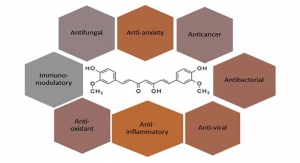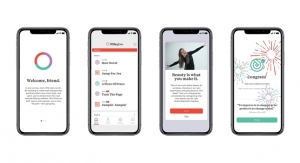By Sean Moloughney, Editor05.02.19
Globally, an estimated 1.3 billion people live with some form of vision impairment, according to the World Health Organization (WHO). The most common issues include uncorrected refractive errors, cataract, age-related macular degeneration (AMD), glaucoma, and diabetic retinopathy, among others. At the same time, approximately 80% of all causes of visual impairment are preventable or curable. For example, refractive error can be corrected with glasses while cataract surgery can restore vision.
Impact Factors
Overall, many factors can impact eye health, according to Terri Rieger, OD, board certified optometrist, Fairbury Vision Center. “Genetics, environmental exposure—especially to UV and blue light—smoking, and even diet can greatly affect how well our eyes function.”
A growing aging population means millions of Americans will struggle with vision problems, admitted Sébastien Bornet, vice president of global marketing and sales at Horphag Research (exclusive supplier of Pycnogenol and Robuvit). “There are a number of daily activities that can negatively impact our eye health as well. Staring at screens, sun exposure, and poor diet all affect eye health quality, along with genetic factors and other health conditions.”
Golan Raz, head of the global health division at Lycored, agreed that vision can be compromised with age. “However, good eye health may be maintained when sufficient awareness to some key factors are in place. The eyes, like most of our organs, are influenced by the food we eat. It is also effected by the specific exercises we do, the level of stress we are exposed to, as well as some eye-specific elements like sun exposure, screen time (TV, computer, smartphones, and others), as well as other environmental stress factors.”
Regular eye exams and healthy lifestyles are crucial for maintaining optimal vision health, according to Melanie Bush, director of berry science, Artemis International, Inc. “There are numerous afflictions of the eye that can occur, either due to genetic predisposition, environmental stressors, and of course, aging. The conditions can affect quality of life to various degrees, ranging from a mild inconvenience to severe impairments. Some of these issues may be unavoidable, but could possibly be slowed or improved with proper treatment and preventative measures.”
While an individual’s genetics and age can’t be controlled, many other factors can be managed—diet in particular. Proper nutrition and light exposure are two of the biggest factors affecting eye health, according to Brian Appell, marketing manager, OmniActive Health Technologies. “Visible light is both necessary for vision and harmful due to excessive or prolonged exposure. Light-mediated damage plays a role in many common forms of blindness, including age-related macular degeneration.”
To combat the effects of constant exposure to light, the eyes have evolved mechanisms to preserve vision, Appell continued, and macular carotenoids play a role by filtering high-energy blue light. “But we need to get those important nutrients from the diet, and like most people, we don’t eat enough fruits and vegetables to meet that daily requirement for protection.”
Full Spectrum of Concerned Consumers
Like other challenges, some demographic populations are more likely to develop certain eye health issues than others, according to Rieger. Age, gender, genetics, and race are significant factors when looking at incidences of certain eye conditions.
“For instance, the risk of developing age-related macular degeneration and cataracts increases at a steady rate after age 50,” she noted. “Females with light skin and eyes are more likely to develop age-related macular degeneration. Women are also more likely to develop dry eye after menopause due to changes in hormones or deficiencies in nutrition. Smoking is especially harmful to the eyes and fragile vasculature in the retina. Issues like diabetic retinopathy and glaucoma have a higher prevalence in minority groups like African Americans, Native Americans, Alaskan Natives, and Asian Americans.”
Vision is an important aspect of overall health, noted Ceci Snyder, global product manager, Kemin Human Nutrition and Health. “Eye health concerns increase with age due to age-related conditions such as presbyopia, a form of farsightedness that often occurs after age 40,” she said. Still, “eye health should be a concern at all ages because everyone is exposed to blue light from sunlight and digital devices.”
As a category, eye health has been built primarily around the aging consumer, because most vision impairment cases occur in people age 50 and older, noted Appell. “So, supplementation has focused on preventing conditions like AMD or slowing its progression. What has changed over the past several years is the science and conversation about the importance of eye health ingredients beyond just protection.”
More research is also being published showing how nutrients help people see better. “Endpoints like contrast sensitivity, photo-stress recovery, and glare performance are indicators of how well we see under various conditions, and they can be measured with validated methods,” noted Appell. “So, it’s not just about reducing risk of age-related conditions like AMD anymore (a condition that may take several decades to develop), but providing a more immediate benefit to consumers, such as simply seeing better. Finally, as the implications of increased blue light exposure become more apparent, researchers are continuing to examine how nutrients like macular carotenoids can help protect the eyes from various sources, including prolonged exposure to digital devices.”
Aside from occasional vision problems in children, young eyes are relatively healthy, with refractive errors like nearsightedness (myopia) and farsightedness (hyperopia) being the main issues, said Bush. “As the eyes age, not only do they become less sharp and efficient, additional concerns include cataracts, ocular occlusions, night blindness, retinal detachment, dry eyes, glaucoma, and age-related macular degeneration.”
Overall, many issues can arise simply due to the natural aging process, Bush continued. “However, there is one issue of eye health that has begun plaguing people of all ages: eye strain. This is an increasing problem in modern society due to the omnipresence and overuse of video display terminals—also known as our beloved cell phones, tablets, computers, and other screens.”
Bornet also noted that younger consumers are experiencing more eye strain. “In fact, studies show that myopia (nearsightedness) among younger consumers has nearly doubled compared to previous generations. With more exposure to blue light and strain from reading small print on tablets, phones, and computer screens, a younger demographic is becoming interested in investing in the eye health supplement category.”
Historically, consumers seeking supplements specifically targeted for vision support have been in the 40+ age group, as the effects of age-related deterioration begin to come into full effect. “However, with the influx of technology and screens in our daily lives, revitalizing tired eyes has become more of a priority among millennials and younger consumers as well,” said Bush. “Additionally, with younger generations focusing on health, supplementation, and prevention more than their parents or grandparents did at their age, there is more of a focus on keeping eyes healthy longer, rather than trying to ‘treat’ or ‘reverse’ problems once they arise.”
Ultimately, all demographics are susceptible to the overuse of technology, which can lead to dry eye as well as eye fatigue, noted Bill Harris, founder, OmegaQuant Analytics, and inventor of the Omega-3 Index Test. “Regarding dry eye, omega-3s have been shown to help support relief from this condition. Research has also shown that a higher Omega-3 Index is associated with a lower incidence of eye problems.”
Essential Nutrition
Proper nutrition is critical to eye health. The Age-Related Eye Disease Studies—AREDS 1 (2001) and AREDS2 (2006)—conducted by researchers at the NIH’s National Eye Institute, pointed to the importance of nutrients like vitamins E and C, copper, zinc, lutein and zeaxanthin, and omega-3 fatty acids.
While many specific nutrients are important, lutein and zeaxanthin stand out as top performers, according to Rieger. “These two dietary antioxidants help form a protective layer in the back of the eye that guards the eye’s sensitive receptors from damaging effects of light, especially the high-energy short wavelength light rays (blue light). This protective layer, known as macular pigment, also plays a major role in improving visual function like contrast sensitivity, visual sharpness, and light sensitivity. Evidence points to a correlation between the density of pigment in the macula and a reduced risk for age-related macular degeneration.”
Appell agreed, saying that macular carotenoids are the most critical nutrients for several reasons. “They are preferentially deposited in the macula, the area of the eye responsible for highest visual acuity and also exposed to the amount of oxidative stress associated with blue light,” he noted. “The body cannot synthesize macular carotenoids, they must come from the diet. Their primary roles are to filter high-energy blue light, quench free radicals that result from blue light, and optimize visual performance—how we see—under a variety of bright/low light conditions.”
Over the past several years, OmniActive has sponsored science detailing the benefits and market opportunities of macular carotenoids. In a mechanism of action study, OmniActive detailed how macular carotenoids reduce both oxidative and endoplasmic reticulum stress—major factors that contribute to photoreceptor degeneration. “In the Lutemax 2020 supplemented group, the number of TUNEL-positive cells was significantly reduced compared to that of the vehicle group,” said Appell. “Western blotting results revealed that reduction in oxidative stress was due to significant downregulation of phosphorylated c-Jun N-terminal kinase (p-JNK) and significant upregulation of nuclear factor erythroid 2-related factor 2 (Nrf2). In addition, reduction in endoplasmic reticulum stress was due to the significant downregulation of glucose-regulated protein (GRP78), phosphorylated protein kinase RNA-like endoplasmic reticulum kinase (p-PERK), activating transcription factor 4 (ATF4) and activating transcription factor 6 (ATF6).”
The LAMA I & II (Lutein, Vision and Mental Acuity) studies demonstrated the bioavailability of Lutemax 2020 and its ability to support visual performance, healthy stress levels, and brain function in young adults.
Also, the B.L.U.E. (Blue Light User Exposure) Study showed Lutemax 2020 supplementation has beneficial effects on ocular health and performance, sleep quality, and eye strain and fatigue in those individuals with long-term exposure to digital screens and other sources of high-energy blue light.
Research has shown that lutein and zeaxanthin are important for eye health from before birth to old age, noted Snyder. At 17 to 22 weeks of gestation, lutein can be found in the fetal retina. Lutein and zeaxanthin protect the eye’s photoreceptors and block excess blue light.
“By consuming lutein and zeaxanthin in our diet or from supplements, we contribute to our eye’s macular pigment optical density, and as a result, our eye’s protection and performance,” she said.
Meanwhile, AMD is a leading cause of vision loss in the U.S. Multiple clinical studies have demonstrated that progression of AMD can be modified through nutritional intervention with a formulation that includes lutein and zeaxanthin, Snyder added.
Additionally, the company’s FloraGLO Lutein brand is backed by four randomized, double-blind, placebo-controlled trials to support its use in brain supplements. “For example, in one of the studies, increased macular pigment optical density was related to improved visual memory, complex attention and reasoning ability (Journal of the International Neuropsychological Society, 2017). The study tested the effects of 10 mg FloraGLO Lutein along with zeaxanthin.
Eye health is influenced by a variety of other nutrients, including omega-3 fatty acids. Omega-3 DHA in particular is a critical component of the retina (like it is of the brain), noted Harris. “Higher omega-3 levels also reduce inflammation, which can be a major cause of dry eye syndrome.”
A 2016 study published in Cornea showed that omega-3s not only reduce the effects of dry eye syndrome but also that one’s Omega-3 Index is strongly correlated to risk. In this study, subjects were randomized to receive four soft gels containing a total of 1,680 mg of eicosapentaenoic acid (EPA) and 560 mg of docosahexaenoic acid (DHA) or a control of 3,136 mg of linoleic acid (LA), daily for 12 weeks. Subjects were measured at baseline, week 6, and week 12 for various markers of dry eye. In addition, their Omega-3 Index was tested at baseline and 12 weeks.
One hundred five subjects completed the study. A statistically significant reduction in tear osmolarity was observed in the omega-3 group versus control group at weeks 6 and 12. At 12 weeks, a statistically significant increase in Omega-3 Index levels was also observed.
Against a background of considerable evidence implicating omega-3 fatty acids in the prevention of AMD, some results of AREDS2 were unexpected, said Harris. “The possibility that the design, setting, intake, or subjects of AREDS2 may not have permitted the prophylactic potential of omega-3 to be adequately demonstrated might be factors.”
A 2015 study took a closer look at epidemiological studies, which have indicated potential preventive effects of omega-3. In fact, an earlier randomized prospective study (NAT2) showed that patients who achieved high red blood cell membrane EPA/DHA levels (i.e., Omega-3 Index) were significantly protected against AMD compared with those with permanently low EPA/DHA levels.
“The mechanisms of action of EPA+DHA products are primarily anti-inflammation. The Epitropoulos et al. paper (Cornea, 2016) provides evidence for that in a placebo-controlled study, and our lab has published data linking a higher Omega-3 Index to lower levels of several inflammatory markers,” said Harris.
More products continue to add omega-3s EPA and DHA to their formulation because of the benefits researched in recent clinical studies, said Harris. “Those with eye issues might not only want to strive to take omega-3s, but also make sure they are taking enough of the right ones by regularly measuring their Omega-3 Index.”
Overall, antioxidants are important for long-term eye care, according to Bornet. “Lipid-soluble antioxidants such as carotenoids can help protect against oxidative damage.” For example, clinical research on more than 1,200 diabetics suffering from diabetic retinopathy showed that Pycnogenol French maritime pine bark extract slowed progression of symptoms associated with this condition, including blood leaking into the retina, which can cause irreversible vision loss, he added.
“One 2009 study published in the Journal of Ocular Pharmacology and Therapeutics found that daily supplementation with Pycnogenol helped to improve microcirculation, retinal edema, and visual acuity in the early stages of diabetic retinopathy.”
Alongside lutein, lycopene from red tomatoes has been shown to “reduce oxidative stress while positively influencing inflammatory markers,” according to Raz. “As a general rule, a balanced diet should include daily consumption of a colorful variety of unprocessed fruits and vegetables, he suggested. “From that point, one should look at the right consumption of quality protein to make sure the diet is well balanced. If the focus is eye health, additional eye-supportive nutrients can be added to one’s diet. The strategy may be to fortify the daily diet with quality plant-based antioxidants together with the right vitamins and minerals.”
According to Bush, anthocyanins, specifically those found in darkly pigmented berries, have been tied to vision benefits. “Blueberry and bilberry have been studied in multiple areas ranging from fatigue to glaucoma and even dry eye. Perhaps most notably, the anthocyanins specifically found in black currant (Ribes nigrum) have been shown in a human clinical study (Alternative Medicine Review, 2000) to have significant benefits on screen-induced eye fatigue, as well as improve dark adaptation at a low dose (50 mg anthocyanins).”
Berry flavonoids have been tied to anti-inflammatory properties, which may contribute to the observed benefits, Bush added. “This further substantiates the importance of diet and supplementation in support of maintaining healthy vision, and that berries like black currant and blueberry may play an important role. The goal of any nutritional or dietary supplement regimen is typically about keeping the body in a healthy and balanced state. Vision health is no different.”
Innovation & Outlook
Science has come a long way since the original Age-Related Eye Disease Study (AREDS) was released in 2001, noted Rieger. “The original AREDS formula did not even contain lutein and zeaxanthin. At that time, there were only a handful of choices in eye vitamins. The AREDS 2 study in 2013 proved that adding lutein/zeaxanthin and omega-3 fatty acids significantly reduced the risk for developing advanced AMD. That study also brought zinc and omega-3 fatty acids into the picture and demoted the role of beta-carotene. Our armamentarium of vitamins has expanded and keeps improving. We can tailor our nutraceutical regimen to the patient’s specific needs for retinal health, dry eye, and more.”
In the past, healthcare practitioners weren’t recommending vitamins until they saw changes on the retina, she continued. “Now, we have technology to help us identify patients at risk, which is helping to prevent and slow down the development of retinal changes. By measuring a patient’s macular pigment optical density (MPOD), we are identifying those at risk in a non-invasive manner before retinal disease is present.”
MPOD measurement is also a powerful tool for measuring one’s progress with ocular vitamins, Rieger added. “As the MPOD measurement improves, our patients see improvements in night vision and clarity, proving the effectiveness of the eye vitamins we recommend. We also have genetic tests that help us identify SNPs and target specific vitamin deficiencies. Genetic data and macular pigment testing offer us a valuable preventive solution.”
Appell said he believes the category is evolving from a prevention market to include visual performance. “That is the eye’s ability to see in low/bright light conditions, to quickly recover from sudden exposure to bright light(s), and reduce eye fatigue/strain when using digital devices.”
Processing speed and reaction time is also dependent on vision and something of interest to the e-gamer consumer, Appell noted. “Finally, the children’s market can be a growth driver for eye health supplements. It’s not a new concept, but with growing science on the importance of certain nutrients like macular carotenoids for development and protection, and the ability to support visual performance, formulators could create next-generation products that resonate with parents.”
Opportunities in visual performance continue to grow because healthy vision plays such an important role in just about everything people do, he added. “Nutritional intervention for other conditions, like dry eye or cataracts, will also evolve as this market grows.”
Ultimately, more consumers are aware of the vision damage that can result from daily habits and health conditions, said Bornet. At the same time, interest in natural, research-backed solutions continues to grow, leading to clear market opportunities. “We anticipate continued interest in supplements that promote eye health across a spectrum of generations both young and old. Almost everyone relies on smartphones, computers, and tablets to connect and to do their job, making blue light a relevant eye health concern for many.”
Rieger said the market’s future looks impressive. “More and more people are concerned for their overall health and wellness, and a demand for improved nutrition is growing, too. Vitamins are a great way for people to improve their nutritional intake without drastically modifying their lifestyles. The important thing to remember when looking for eye health vitamins is the quality and proof behind the product. Because the market is booming, there are a lot of choices, so having a product backed by science and regularly tested to ensure quality is so important for patient outcomes. I trust my patients’ health to EyePromise, but I encourage everyone to do their own research.”
Impact Factors
Overall, many factors can impact eye health, according to Terri Rieger, OD, board certified optometrist, Fairbury Vision Center. “Genetics, environmental exposure—especially to UV and blue light—smoking, and even diet can greatly affect how well our eyes function.”
A growing aging population means millions of Americans will struggle with vision problems, admitted Sébastien Bornet, vice president of global marketing and sales at Horphag Research (exclusive supplier of Pycnogenol and Robuvit). “There are a number of daily activities that can negatively impact our eye health as well. Staring at screens, sun exposure, and poor diet all affect eye health quality, along with genetic factors and other health conditions.”
Golan Raz, head of the global health division at Lycored, agreed that vision can be compromised with age. “However, good eye health may be maintained when sufficient awareness to some key factors are in place. The eyes, like most of our organs, are influenced by the food we eat. It is also effected by the specific exercises we do, the level of stress we are exposed to, as well as some eye-specific elements like sun exposure, screen time (TV, computer, smartphones, and others), as well as other environmental stress factors.”
Regular eye exams and healthy lifestyles are crucial for maintaining optimal vision health, according to Melanie Bush, director of berry science, Artemis International, Inc. “There are numerous afflictions of the eye that can occur, either due to genetic predisposition, environmental stressors, and of course, aging. The conditions can affect quality of life to various degrees, ranging from a mild inconvenience to severe impairments. Some of these issues may be unavoidable, but could possibly be slowed or improved with proper treatment and preventative measures.”
While an individual’s genetics and age can’t be controlled, many other factors can be managed—diet in particular. Proper nutrition and light exposure are two of the biggest factors affecting eye health, according to Brian Appell, marketing manager, OmniActive Health Technologies. “Visible light is both necessary for vision and harmful due to excessive or prolonged exposure. Light-mediated damage plays a role in many common forms of blindness, including age-related macular degeneration.”
To combat the effects of constant exposure to light, the eyes have evolved mechanisms to preserve vision, Appell continued, and macular carotenoids play a role by filtering high-energy blue light. “But we need to get those important nutrients from the diet, and like most people, we don’t eat enough fruits and vegetables to meet that daily requirement for protection.”
Full Spectrum of Concerned Consumers
Like other challenges, some demographic populations are more likely to develop certain eye health issues than others, according to Rieger. Age, gender, genetics, and race are significant factors when looking at incidences of certain eye conditions.
“For instance, the risk of developing age-related macular degeneration and cataracts increases at a steady rate after age 50,” she noted. “Females with light skin and eyes are more likely to develop age-related macular degeneration. Women are also more likely to develop dry eye after menopause due to changes in hormones or deficiencies in nutrition. Smoking is especially harmful to the eyes and fragile vasculature in the retina. Issues like diabetic retinopathy and glaucoma have a higher prevalence in minority groups like African Americans, Native Americans, Alaskan Natives, and Asian Americans.”
Vision is an important aspect of overall health, noted Ceci Snyder, global product manager, Kemin Human Nutrition and Health. “Eye health concerns increase with age due to age-related conditions such as presbyopia, a form of farsightedness that often occurs after age 40,” she said. Still, “eye health should be a concern at all ages because everyone is exposed to blue light from sunlight and digital devices.”
As a category, eye health has been built primarily around the aging consumer, because most vision impairment cases occur in people age 50 and older, noted Appell. “So, supplementation has focused on preventing conditions like AMD or slowing its progression. What has changed over the past several years is the science and conversation about the importance of eye health ingredients beyond just protection.”
More research is also being published showing how nutrients help people see better. “Endpoints like contrast sensitivity, photo-stress recovery, and glare performance are indicators of how well we see under various conditions, and they can be measured with validated methods,” noted Appell. “So, it’s not just about reducing risk of age-related conditions like AMD anymore (a condition that may take several decades to develop), but providing a more immediate benefit to consumers, such as simply seeing better. Finally, as the implications of increased blue light exposure become more apparent, researchers are continuing to examine how nutrients like macular carotenoids can help protect the eyes from various sources, including prolonged exposure to digital devices.”
Aside from occasional vision problems in children, young eyes are relatively healthy, with refractive errors like nearsightedness (myopia) and farsightedness (hyperopia) being the main issues, said Bush. “As the eyes age, not only do they become less sharp and efficient, additional concerns include cataracts, ocular occlusions, night blindness, retinal detachment, dry eyes, glaucoma, and age-related macular degeneration.”
Overall, many issues can arise simply due to the natural aging process, Bush continued. “However, there is one issue of eye health that has begun plaguing people of all ages: eye strain. This is an increasing problem in modern society due to the omnipresence and overuse of video display terminals—also known as our beloved cell phones, tablets, computers, and other screens.”
Bornet also noted that younger consumers are experiencing more eye strain. “In fact, studies show that myopia (nearsightedness) among younger consumers has nearly doubled compared to previous generations. With more exposure to blue light and strain from reading small print on tablets, phones, and computer screens, a younger demographic is becoming interested in investing in the eye health supplement category.”
Historically, consumers seeking supplements specifically targeted for vision support have been in the 40+ age group, as the effects of age-related deterioration begin to come into full effect. “However, with the influx of technology and screens in our daily lives, revitalizing tired eyes has become more of a priority among millennials and younger consumers as well,” said Bush. “Additionally, with younger generations focusing on health, supplementation, and prevention more than their parents or grandparents did at their age, there is more of a focus on keeping eyes healthy longer, rather than trying to ‘treat’ or ‘reverse’ problems once they arise.”
Ultimately, all demographics are susceptible to the overuse of technology, which can lead to dry eye as well as eye fatigue, noted Bill Harris, founder, OmegaQuant Analytics, and inventor of the Omega-3 Index Test. “Regarding dry eye, omega-3s have been shown to help support relief from this condition. Research has also shown that a higher Omega-3 Index is associated with a lower incidence of eye problems.”
Essential Nutrition
Proper nutrition is critical to eye health. The Age-Related Eye Disease Studies—AREDS 1 (2001) and AREDS2 (2006)—conducted by researchers at the NIH’s National Eye Institute, pointed to the importance of nutrients like vitamins E and C, copper, zinc, lutein and zeaxanthin, and omega-3 fatty acids.
While many specific nutrients are important, lutein and zeaxanthin stand out as top performers, according to Rieger. “These two dietary antioxidants help form a protective layer in the back of the eye that guards the eye’s sensitive receptors from damaging effects of light, especially the high-energy short wavelength light rays (blue light). This protective layer, known as macular pigment, also plays a major role in improving visual function like contrast sensitivity, visual sharpness, and light sensitivity. Evidence points to a correlation between the density of pigment in the macula and a reduced risk for age-related macular degeneration.”
Appell agreed, saying that macular carotenoids are the most critical nutrients for several reasons. “They are preferentially deposited in the macula, the area of the eye responsible for highest visual acuity and also exposed to the amount of oxidative stress associated with blue light,” he noted. “The body cannot synthesize macular carotenoids, they must come from the diet. Their primary roles are to filter high-energy blue light, quench free radicals that result from blue light, and optimize visual performance—how we see—under a variety of bright/low light conditions.”
Over the past several years, OmniActive has sponsored science detailing the benefits and market opportunities of macular carotenoids. In a mechanism of action study, OmniActive detailed how macular carotenoids reduce both oxidative and endoplasmic reticulum stress—major factors that contribute to photoreceptor degeneration. “In the Lutemax 2020 supplemented group, the number of TUNEL-positive cells was significantly reduced compared to that of the vehicle group,” said Appell. “Western blotting results revealed that reduction in oxidative stress was due to significant downregulation of phosphorylated c-Jun N-terminal kinase (p-JNK) and significant upregulation of nuclear factor erythroid 2-related factor 2 (Nrf2). In addition, reduction in endoplasmic reticulum stress was due to the significant downregulation of glucose-regulated protein (GRP78), phosphorylated protein kinase RNA-like endoplasmic reticulum kinase (p-PERK), activating transcription factor 4 (ATF4) and activating transcription factor 6 (ATF6).”
The LAMA I & II (Lutein, Vision and Mental Acuity) studies demonstrated the bioavailability of Lutemax 2020 and its ability to support visual performance, healthy stress levels, and brain function in young adults.
Also, the B.L.U.E. (Blue Light User Exposure) Study showed Lutemax 2020 supplementation has beneficial effects on ocular health and performance, sleep quality, and eye strain and fatigue in those individuals with long-term exposure to digital screens and other sources of high-energy blue light.
Research has shown that lutein and zeaxanthin are important for eye health from before birth to old age, noted Snyder. At 17 to 22 weeks of gestation, lutein can be found in the fetal retina. Lutein and zeaxanthin protect the eye’s photoreceptors and block excess blue light.
“By consuming lutein and zeaxanthin in our diet or from supplements, we contribute to our eye’s macular pigment optical density, and as a result, our eye’s protection and performance,” she said.
Meanwhile, AMD is a leading cause of vision loss in the U.S. Multiple clinical studies have demonstrated that progression of AMD can be modified through nutritional intervention with a formulation that includes lutein and zeaxanthin, Snyder added.
Additionally, the company’s FloraGLO Lutein brand is backed by four randomized, double-blind, placebo-controlled trials to support its use in brain supplements. “For example, in one of the studies, increased macular pigment optical density was related to improved visual memory, complex attention and reasoning ability (Journal of the International Neuropsychological Society, 2017). The study tested the effects of 10 mg FloraGLO Lutein along with zeaxanthin.
Eye health is influenced by a variety of other nutrients, including omega-3 fatty acids. Omega-3 DHA in particular is a critical component of the retina (like it is of the brain), noted Harris. “Higher omega-3 levels also reduce inflammation, which can be a major cause of dry eye syndrome.”
A 2016 study published in Cornea showed that omega-3s not only reduce the effects of dry eye syndrome but also that one’s Omega-3 Index is strongly correlated to risk. In this study, subjects were randomized to receive four soft gels containing a total of 1,680 mg of eicosapentaenoic acid (EPA) and 560 mg of docosahexaenoic acid (DHA) or a control of 3,136 mg of linoleic acid (LA), daily for 12 weeks. Subjects were measured at baseline, week 6, and week 12 for various markers of dry eye. In addition, their Omega-3 Index was tested at baseline and 12 weeks.
One hundred five subjects completed the study. A statistically significant reduction in tear osmolarity was observed in the omega-3 group versus control group at weeks 6 and 12. At 12 weeks, a statistically significant increase in Omega-3 Index levels was also observed.
Against a background of considerable evidence implicating omega-3 fatty acids in the prevention of AMD, some results of AREDS2 were unexpected, said Harris. “The possibility that the design, setting, intake, or subjects of AREDS2 may not have permitted the prophylactic potential of omega-3 to be adequately demonstrated might be factors.”
A 2015 study took a closer look at epidemiological studies, which have indicated potential preventive effects of omega-3. In fact, an earlier randomized prospective study (NAT2) showed that patients who achieved high red blood cell membrane EPA/DHA levels (i.e., Omega-3 Index) were significantly protected against AMD compared with those with permanently low EPA/DHA levels.
“The mechanisms of action of EPA+DHA products are primarily anti-inflammation. The Epitropoulos et al. paper (Cornea, 2016) provides evidence for that in a placebo-controlled study, and our lab has published data linking a higher Omega-3 Index to lower levels of several inflammatory markers,” said Harris.
More products continue to add omega-3s EPA and DHA to their formulation because of the benefits researched in recent clinical studies, said Harris. “Those with eye issues might not only want to strive to take omega-3s, but also make sure they are taking enough of the right ones by regularly measuring their Omega-3 Index.”
Overall, antioxidants are important for long-term eye care, according to Bornet. “Lipid-soluble antioxidants such as carotenoids can help protect against oxidative damage.” For example, clinical research on more than 1,200 diabetics suffering from diabetic retinopathy showed that Pycnogenol French maritime pine bark extract slowed progression of symptoms associated with this condition, including blood leaking into the retina, which can cause irreversible vision loss, he added.
“One 2009 study published in the Journal of Ocular Pharmacology and Therapeutics found that daily supplementation with Pycnogenol helped to improve microcirculation, retinal edema, and visual acuity in the early stages of diabetic retinopathy.”
Alongside lutein, lycopene from red tomatoes has been shown to “reduce oxidative stress while positively influencing inflammatory markers,” according to Raz. “As a general rule, a balanced diet should include daily consumption of a colorful variety of unprocessed fruits and vegetables, he suggested. “From that point, one should look at the right consumption of quality protein to make sure the diet is well balanced. If the focus is eye health, additional eye-supportive nutrients can be added to one’s diet. The strategy may be to fortify the daily diet with quality plant-based antioxidants together with the right vitamins and minerals.”
According to Bush, anthocyanins, specifically those found in darkly pigmented berries, have been tied to vision benefits. “Blueberry and bilberry have been studied in multiple areas ranging from fatigue to glaucoma and even dry eye. Perhaps most notably, the anthocyanins specifically found in black currant (Ribes nigrum) have been shown in a human clinical study (Alternative Medicine Review, 2000) to have significant benefits on screen-induced eye fatigue, as well as improve dark adaptation at a low dose (50 mg anthocyanins).”
Berry flavonoids have been tied to anti-inflammatory properties, which may contribute to the observed benefits, Bush added. “This further substantiates the importance of diet and supplementation in support of maintaining healthy vision, and that berries like black currant and blueberry may play an important role. The goal of any nutritional or dietary supplement regimen is typically about keeping the body in a healthy and balanced state. Vision health is no different.”
Innovation & Outlook
Science has come a long way since the original Age-Related Eye Disease Study (AREDS) was released in 2001, noted Rieger. “The original AREDS formula did not even contain lutein and zeaxanthin. At that time, there were only a handful of choices in eye vitamins. The AREDS 2 study in 2013 proved that adding lutein/zeaxanthin and omega-3 fatty acids significantly reduced the risk for developing advanced AMD. That study also brought zinc and omega-3 fatty acids into the picture and demoted the role of beta-carotene. Our armamentarium of vitamins has expanded and keeps improving. We can tailor our nutraceutical regimen to the patient’s specific needs for retinal health, dry eye, and more.”
In the past, healthcare practitioners weren’t recommending vitamins until they saw changes on the retina, she continued. “Now, we have technology to help us identify patients at risk, which is helping to prevent and slow down the development of retinal changes. By measuring a patient’s macular pigment optical density (MPOD), we are identifying those at risk in a non-invasive manner before retinal disease is present.”
MPOD measurement is also a powerful tool for measuring one’s progress with ocular vitamins, Rieger added. “As the MPOD measurement improves, our patients see improvements in night vision and clarity, proving the effectiveness of the eye vitamins we recommend. We also have genetic tests that help us identify SNPs and target specific vitamin deficiencies. Genetic data and macular pigment testing offer us a valuable preventive solution.”
Appell said he believes the category is evolving from a prevention market to include visual performance. “That is the eye’s ability to see in low/bright light conditions, to quickly recover from sudden exposure to bright light(s), and reduce eye fatigue/strain when using digital devices.”
Processing speed and reaction time is also dependent on vision and something of interest to the e-gamer consumer, Appell noted. “Finally, the children’s market can be a growth driver for eye health supplements. It’s not a new concept, but with growing science on the importance of certain nutrients like macular carotenoids for development and protection, and the ability to support visual performance, formulators could create next-generation products that resonate with parents.”
Opportunities in visual performance continue to grow because healthy vision plays such an important role in just about everything people do, he added. “Nutritional intervention for other conditions, like dry eye or cataracts, will also evolve as this market grows.”
Ultimately, more consumers are aware of the vision damage that can result from daily habits and health conditions, said Bornet. At the same time, interest in natural, research-backed solutions continues to grow, leading to clear market opportunities. “We anticipate continued interest in supplements that promote eye health across a spectrum of generations both young and old. Almost everyone relies on smartphones, computers, and tablets to connect and to do their job, making blue light a relevant eye health concern for many.”
Rieger said the market’s future looks impressive. “More and more people are concerned for their overall health and wellness, and a demand for improved nutrition is growing, too. Vitamins are a great way for people to improve their nutritional intake without drastically modifying their lifestyles. The important thing to remember when looking for eye health vitamins is the quality and proof behind the product. Because the market is booming, there are a lot of choices, so having a product backed by science and regularly tested to ensure quality is so important for patient outcomes. I trust my patients’ health to EyePromise, but I encourage everyone to do their own research.”
























